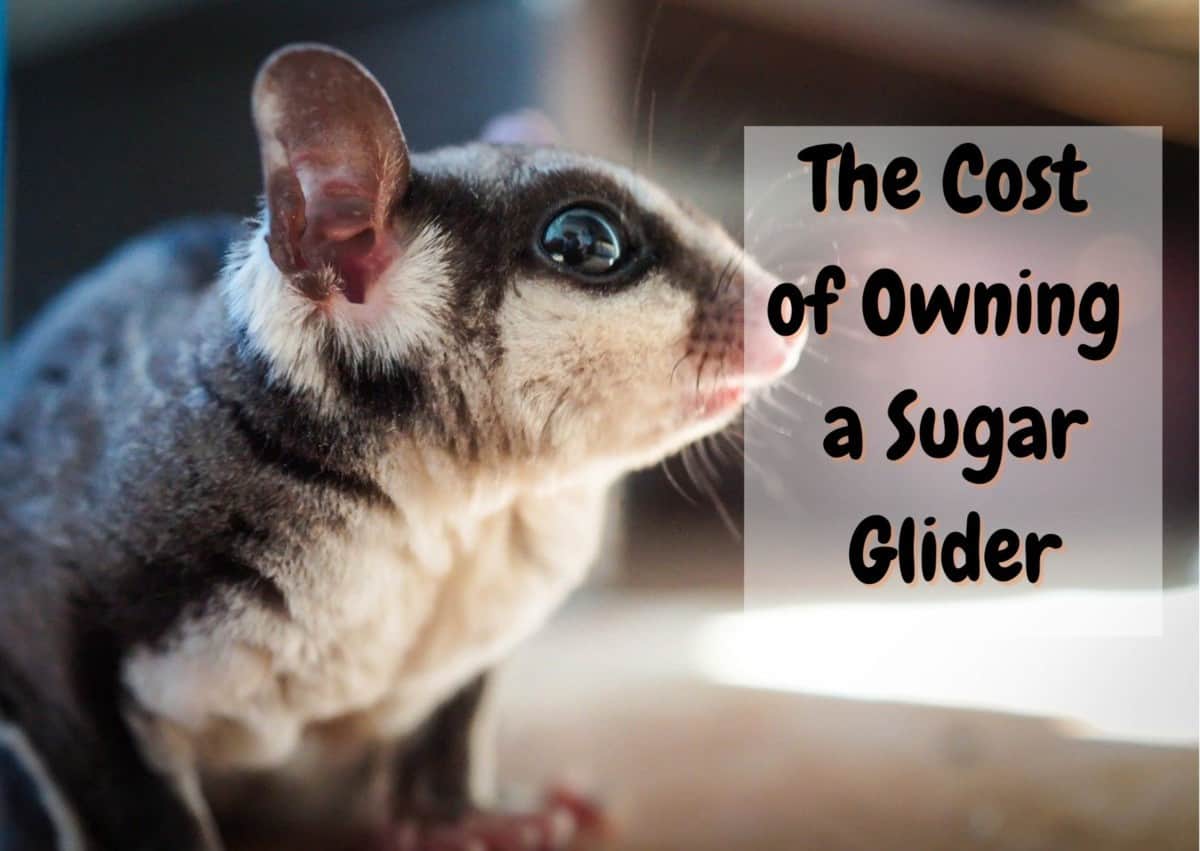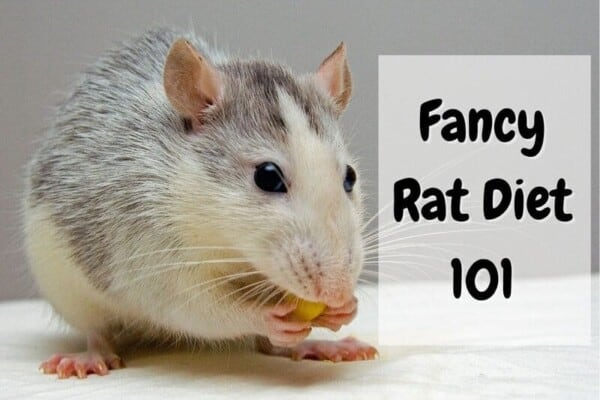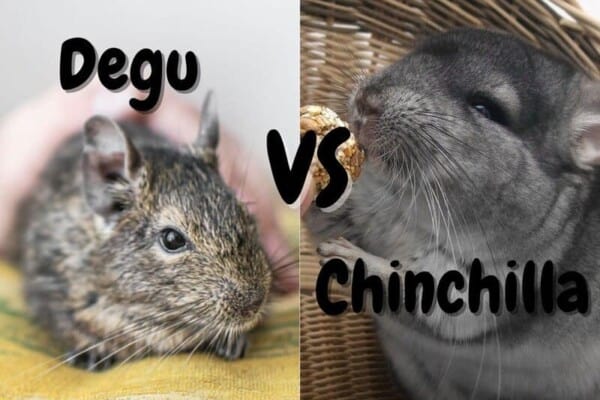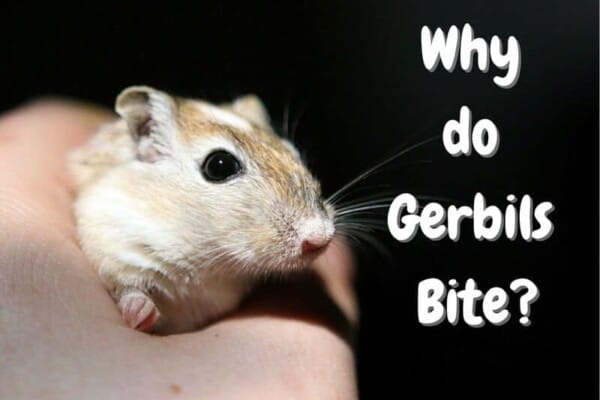In this article, we will discuss the cost of buying and maintaining sugar gliders as pets. Because of their small size, sugar gliders can be fairly inexpensive when compared to some other pets. However, keeping one or more sugar gliders and taking care of them means keeping a small budget for their needs, as we will discuss now.
How Much Are Sugar Gliders?
A baby sugar glider will cost anything between $200 and $600 USD, while an adult sugar glider costs a little less, around $100 – $200 USD. Cage and bedding are your second-largest expense. Expect to pay between $150 and $300 USD for a good sugar glider cage.
Initial Expenses for one Sugar Glider
| Pet, accessories, and treatments | Price |
|---|---|
| Baby sugar glider | $250 – $600 USD |
| Adult sugar glider | $100 – $200 USD |
| Cage and bedding | around $150 – $300 USD |
| Initial Medical visits (spaying and neutering) | around $150 USD |
Annual Expense for one or more Sugar Gliders
| Expenses | Price | Notes |
|---|---|---|
| Bedding and toys | $120 – $150 USD | about $10 USD per month |
| Food and supplies | $120 USD | $10 USD per month |
| Annual Vet visits | $50 USD | only in case of health issues |
| Insurance | $120 USD | $10 per month (optional) |
Since a sugar glider lives to be about 15 years old, you can multiply the annual expenses by 15 and add that number to the total initial expenses. This will give you a good estimate of how much a single sugar glider will cost you over its lifespan. For the purposes of this article, we’ll say, on average, a little under $7,000, depending on your sugar glider’s specific needs.
By the way, according to the PDSA, the cost of owning a dog through its lifetime amounts to around $27,000 all the way to $42,000 depending on the breed so relatively speaking sugar gliders are cheaper than many pets to own.
A complete breakdown of sugar glider expenses
Some of the biggest expenses that are going to be associated with your sugar glider are going to come about in the initial stages. These expenses, besides the purchase of the sugar glider itself, include the purchase of supplies, as well as medical fees associated with spaying/neutering and vaccinations.
Once all of the initial costs have been taken care of, maintenance of your sugar glider will likely be much less expensive than what you had to shell out in the beginning stages.
1. Cost of one sugar glider: $100 – $600 USD
The price of individual sugar gliders can vary greatly, mainly depending on their age. Older sugar gliders will be cheaper, as they are less popular and harder to train, while younger sugar gliders will be a bit more expensive.
An older sugar glider will cost you around $100, while a baby sugar glider (around 12 weeks at most) will cost you anywhere from $200-$600. The exact cost may depend on both the breeder and the color (Reverse Stripe, Cream, Mahogany Red Mosaic, etc), with the general adage being “you get what you pay for”.
Keep in mind, as well, that it’s often advised to get sugar gliders in pairs to keep each other company. Hence, be prepared to pay twice that amount for a pair of gliders, unless you manage to get a discount.
Feel free to check current sugar glider prices on the following websites dedicated to selling sugar gliders online.
- https://www.jandaexotics.com/sugar-gliders-for-sale
- https://www.thepetglider.com/collections/sugar-gliders-all-ages
- https://www.gliderpets.com/
- https://www.sugarglideradoptions.com/pages/preferred-adoption-application

2. Cost of a sugar glider cage – $100-$300 USD (one-time expense)
Your cage is going to be one of your biggest initial expenses. It’s generally advised that the larger cage you can afford the better, with the minimum suggested size around 2 feet by 2 feet per sugar glider. A nice cage will cost you upwards of $100, but it will likely only be a one-time expense.
3. Cost of food for your sugar gliders – $10 USD per month
Sugar gliders are omnivores, and feeding them will require a daily supply of vegetables, fruits, and tree nuts. You can choose to buy fresh ingredients and make the food yourself, or buy pre-made pellets from the pet store.
Either way, this will cost you around $10 per month, though doing it yourself will require a little bit more work – yet it can be a good way to keep track of your sugar glider’s diet.
On top of the monthly cost of food, you will also need to buy your sugar glider a nice water bottle, and a food dish, which will cost around $10 each at most as a one-off expense.
4. Cost of bedding for your sugar glider cage – $10 USD per month
Once you have your cage, you will have to add bedding. Dressing the cage and getting it ready for your new sugar glider is not all that complicated, but it entails a few necessary expenses.
First off, you will need to line the cage with disposable bedding, which will cost around $10 a month for upkeep. This disposable bedding makes cleaning up their mess easy and greatly increases your sugar glider’s comfort.
You will also likely want to get bed linen for your sugar glider, which can cost around $40. You might also want a heated rock or heat lamp. Sugar gliders don’t like it when it’s too cold and a heated rock can be purchased for as little as $20.
5. Cost of toys for your sugar gliders – $0-$5 USD per month
When it comes to picking out toys for your sugar glider, you really aren’t going to have to spend any more than you want to. Sugar gliders are absolutely fine with cheap toys, and cheap toys can be purchased for a few dollars online or from your pet store.
There are all sorts of fancy sugar glider toys, but, unless you are really anxious to spoil and pamper your sugar glider, these fancy toys really won’t get much more use than their cheap counterparts.
6. Sugar glider health maintenance costs – $20 – $55 USD per month
If all goes well, health maintenance won’t cost very much, either annually or on the initial visit. You can even purchase pet insurance just in case. Here are the main expenses you can expect every year:
- Check-ups – $50 – $100 USD
- Treatment for parasites – $10 – $25 USD
- Pet insurance – $120 – $200 USD
- Emergencies – $70 – $350 USD
One of the initial costs involved in getting a sugar glider is taking it to the vet and getting it either spayed or neutered. Sugar gliders do not require any vaccinations because they don’t carry any known diseases. The neutering will cost you around $50 -$100. Spaying is less commonly performed as it is more complicated.
Once these things are taken care of, you won’t have to pay for them again. All that is left is annual check-ups and emergency care.
Annual Visits to the Vet
Annual visits might cost around $50, but they may cost more if it turns out your sugar glider actually needs some additional treatments. Treatments are generally not all that expensive, but some emergency services can cost a few hundred dollars. For this reason, having a savings account set aside, or some pet insurance might be a good idea.
There are many options for pet insurance available, and they are generally very affordable. These policies can help out greatly in case of an emergency. Some brands offer plans as low as $10 a month for small animals such as sugar gliders.
Be Sure to Keep Your Sugar Glider Clean
Sugar gliders clean themselves like cats, meaning that bathing them with water is not advised. They hate being wet, and it can actually damage their fur and pose a real danger to their health.
For grooming, then, you are going to primarily focus on their teeth and their nails. Nails can be easily trimmed at home, with a good nail clipper costing you only a couple of dollars.
Teeth check-ups should be performed at your annual veterinary visit, and likely won’t cost any extra unless teeth polishing is needed. Even then, a good cleaning will likely only cost you around $20 and will last for a while.
Tips for Keeping Track of Your Sugar Glider’s Health
There are many common issues that can come up with sugar gliders, and being proactive about spotting them can greatly increase your sugar glider’s overall health, as well as greatly decrease any potential medical expenses.
The biggest issues generally come as a result of bacterial infections and dental diseases. Your best bet for avoiding these is to maintain annual check-ups, keep a clean cage, and watch out for any abnormalities in your sugar glider’s behavior. If you are in doubt, never hesitate to consult a professional.
Related articles:
- 155+ Cute and Funny Sugar Glider Names
- Sugar Glider VS Flying Squirrel – Which One Makes The Best Pet?
Contents
- How Much Are Sugar Gliders?
- A complete breakdown of sugar glider expenses
- 1. Cost of one sugar glider: $100 – $600 USD
- 2. Cost of a sugar glider cage – $100-$300 USD (one-time expense)
- 3. Cost of food for your sugar gliders – $10 USD per month
- 4. Cost of bedding for your sugar glider cage – $10 USD per month
- 5. Cost of toys for your sugar gliders – $0-$5 USD per month
- 6. Sugar glider health maintenance costs – $20 – $55 USD per month
- Be Sure to Keep Your Sugar Glider Clean
- Tips for Keeping Track of Your Sugar Glider’s Health













